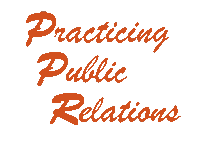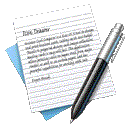Public relations planning starts with four simple questions.
They're very similar to the four fundamental questions that Professor Harold Lasswell always asked when he analyzed the mass communication process. Lasswell's questions were:
Who says what?: In which channel?: To whom? and With what effect?
Adjusted to suit the needs and parameters of public relations planning, Lasswell's four questions become:
What needs to be said or otherwise communicated? In what way(s)? To which target audience(s)? and For what purpose(s)?
If you can't clearly and concisely answer these four questions, you simply don't have a clear idea of what you're trying to do or why you're doing it. If you can answer them, recognize that those answers essentially constitute a very basic public relations plan. -- On the basis of those answers, you now know what needs to be done and generally how you can go about achieving those ends. -- Sometimes, that's all the planning you need to do.
At other times, a more formal and fleshed out approach to planning may be necessary. -- But, why take those extra steps unless you need to? -- Then, if you do need to a more detailed plan, there are dozens of communication planning models you can use to develop one. Most of them are described as a step-by-step process, using anywhere from four to thirty or more steps which you are encouraged to complete one by one in the order they're presented.
The challenge for communication professionals is to find a planning process that suits their own personal working style as well as the size, organizational style, and characteristics of the organization(s) with whom they work. In some cases, your organization or your supervisor will tell you which planning practices and formats you have to use. In other cases, you may be allowed to choose the approach you prefer. If so, you'll probably have to experiment with several approaches before learning which one works best for you.
The fifteen-step public relations planning process described in the online readings listed below has worked well for me and for many other people over the years, but it's just one of many useful and usable approaches to public relations planning. I'd say it's of medium-complexity, and I like the fact that it combines both strategic and tactical planning in one set of steps. Try it. See if you like it.
But remember, you have lots of choices. Try to find one that works well for you and for organization's similar in both purpose and size to your current employer.


